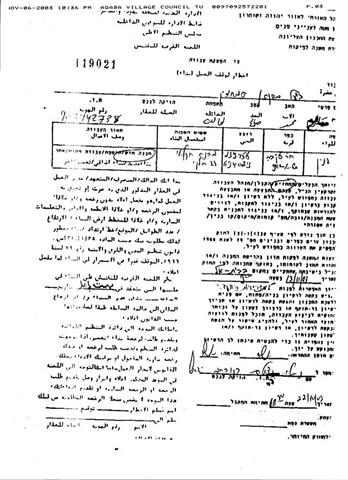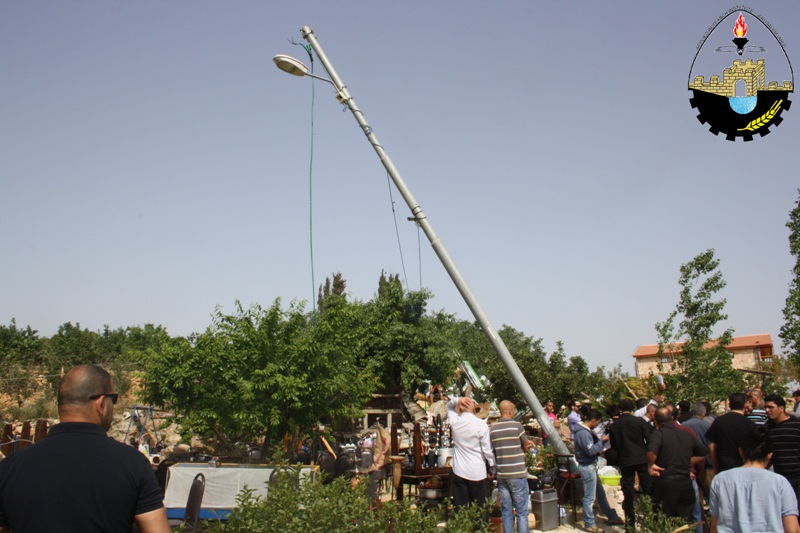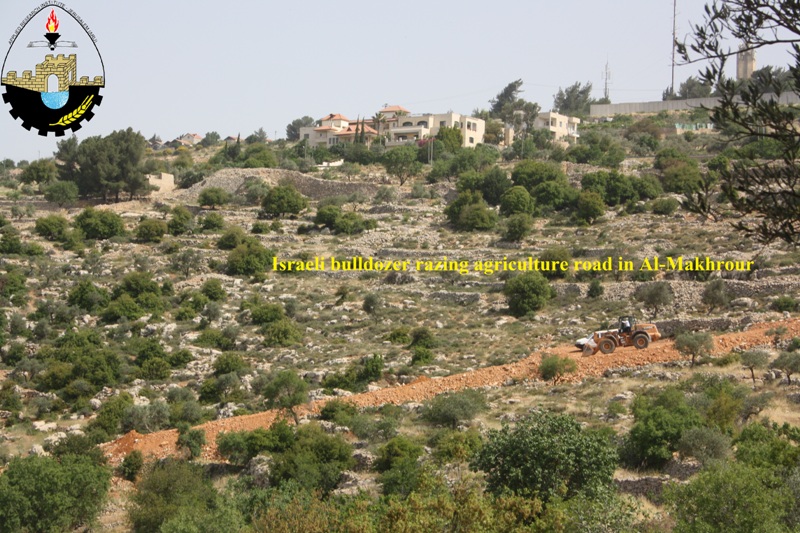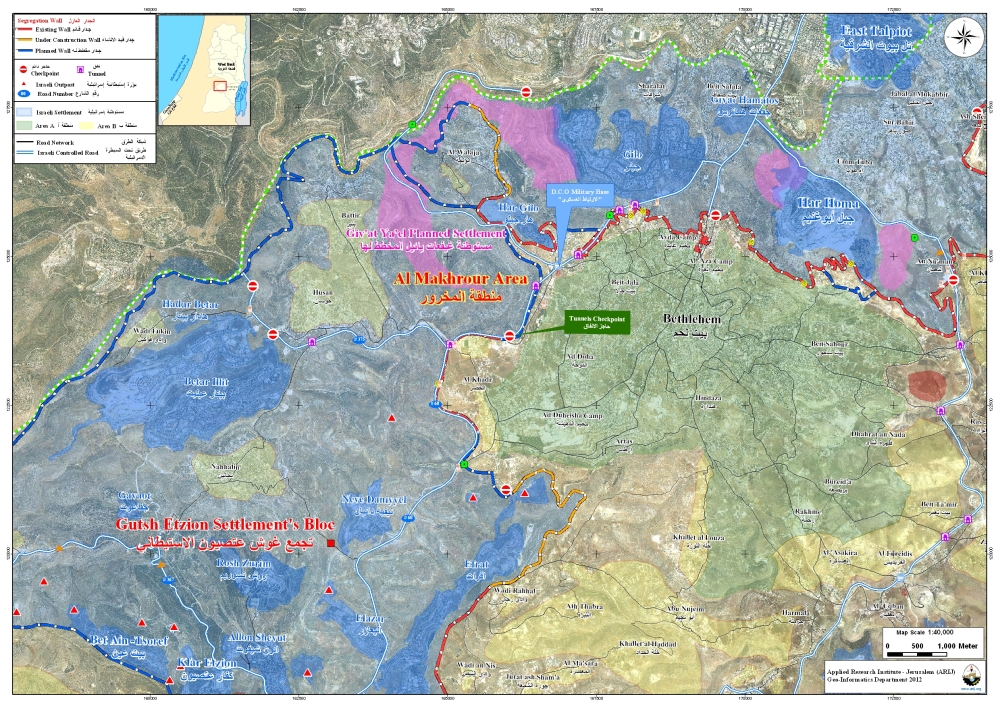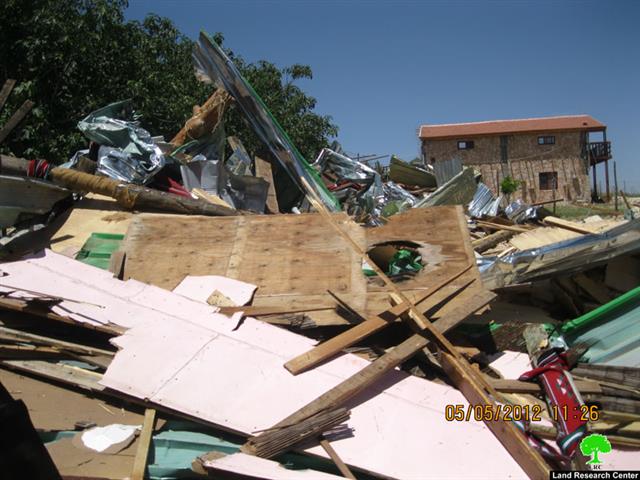Photos 7-8: The Israeli bulldozer razing the agricultural road in Al-Makhrour
Map 1: the demolished restaurant & the razed agricultural road in Al-Makhrour
Photo 9-10: The Israeli Army leaving Al-Makhrour area following the demolition
-
According to the latest revised route of the Segregation Wall published on the Israeli Ministry of Defense’s website on April 30, 2007; and after its completion, Al-Makhrour area along with Husan, Al -Walajeh, Nahalin, Wadi Fukin, Al- Jab’a, Khallet ‘Afana, Khallet Al Balluta, and Beit Sakariya communities (pop exceeding +23000) will be set in an enclave and in isolation from the main cities and centers of life in Bethlehem governorate (Bethlehem, Beit Jala, and Beit Sahour).
-
Al-Makhrour area surrounded with series of Israeli settlements: Har Gilo settlement and the proposed settlement of “Giv’at Ya’el””1 from the north, Gilo from the north east, Gutsh Etzion settlement bloc from the south and southwest, Har Homa settlement from the northeast. Altogether, these settlements constitute a chain of settlements that encircled the city of Jerusalem and isolate it from the rest parts of the West Bank.
-
Al-Makhrour area falls in a strategic site that constitute the geographical linking point between the aforementioned settlements north of Al-Makhrour and Gutsh Etzion settlement bloc in a manner that closing the settlement chain that surrounding the city of Jerusalem and cutting it from the West Bank, and accordingly the Israeli Occupation is tightening the grip on Al-Makhrour residents to push them toward a voluntary eviction from their lands as an initial step for starting a new colonial project in the area which could be an extension part for Giv’at Ya’el settlement or maybe a new settlement in the site after annexing the area. See map 2 :-
-
Article 53 & 147 of the Fourth Geneva Convention of 1949 indicated that: Extensive destruction and appropriation of property not justified by military necessity and carried out unlawfully and wantonly, is a grave breach of the Convention.
-
Moreover Art. 23 of the Hague Convention of 1907 also provides: In addition to the prohibitions provided by special Conventions, it is especially forbidden to destroy or seize the enemy’s property, unless such destruction or seizure be imperatively demanded by the necessities of war.
-
Also under the Universal Declaration of Human Rights Adopted and proclaimed by General Assembly resolution 217 A (III) of, December 10, 1948, Article 17 reads: ‘No one shall be arbitrarily deprived of his property.’ Which means it bans Israel from destroying or confiscating the property of the Palestinians at any case.
-
In the year 2004 the United Nations Security Council called on Israel to stop demolition of Palestinian homes under Resolution No. 1544-(2004), the resolution states: ‘The Security Council called on Israel to respect its obligations under international humanitarian law, particularly the obligation not to undertake home demolitions contrary to that law’.
The Applied Research Institute – Jerusalem


